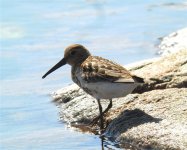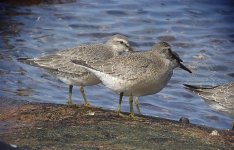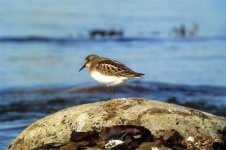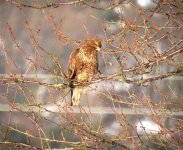EagleEyed
Well-known member
Hi All,
I have a Fieldscope 82mm ED Angled (I also have the 50mm ED Angled) with the 25-75x zoom, the 50x wide, and the 30x wide, these are all the MC eyepieces not the digiscoping eyepieces. I need to get a digiscoping solution going for good quality documentation purposes but need some advice. I would like to know what solutions (cameras/adapters/eyepieces) you folks here are using for your 82mm ED fieldscopes, and how you feel about the results you get. If you can reference your photos on the net that would be really helpful.
In your responses please don't consider the best solution for the MC eyepieces or to include the ED50 in your calculations, I am not too concerned about digiscoping with the 50ED just yet, but want to get a good solution only for the 82. I really appreciate any feedback.
I wish that Nikon would come out with a good technical digiscoping guide for their products and keep it up to date. I mean if I was a world-class camera AND spotting scope maker, I would have a constantly updated electronic downloadable publication showing which of my camera and scope combinations were advisable and the comparative strengths and weaknesses of each, giving magnifications possible with each combination, techniques, adapter and equipment recommendations, etc. Support like that would really help to sell product and endear users to the brand!
So far I can see 3 ways to go:
1. A Nikon DSLR (but which one?) with Nikon's DSLR adapter.
2. A Nikon digital camera (but which one?) with which Nikon adapter gear. Nikon is still showing on their website that their adapters work with the P5000 series of cameras, these cameras are not even available any more. What is their current solution with their current equipment?
3. Another brand of digital camera, just holding it up to the eyepiece, or
using some other adapter gear.
I think with a DSLR you just get one fixed magnification. With a digital camera you can maybe get more magnification.
What do you guys think, what solutions are you using with the 82, and how do you like them?
I know a lot of people are interested in the answer to these questions!
Thanks,
Mark
I have a Fieldscope 82mm ED Angled (I also have the 50mm ED Angled) with the 25-75x zoom, the 50x wide, and the 30x wide, these are all the MC eyepieces not the digiscoping eyepieces. I need to get a digiscoping solution going for good quality documentation purposes but need some advice. I would like to know what solutions (cameras/adapters/eyepieces) you folks here are using for your 82mm ED fieldscopes, and how you feel about the results you get. If you can reference your photos on the net that would be really helpful.
In your responses please don't consider the best solution for the MC eyepieces or to include the ED50 in your calculations, I am not too concerned about digiscoping with the 50ED just yet, but want to get a good solution only for the 82. I really appreciate any feedback.
I wish that Nikon would come out with a good technical digiscoping guide for their products and keep it up to date. I mean if I was a world-class camera AND spotting scope maker, I would have a constantly updated electronic downloadable publication showing which of my camera and scope combinations were advisable and the comparative strengths and weaknesses of each, giving magnifications possible with each combination, techniques, adapter and equipment recommendations, etc. Support like that would really help to sell product and endear users to the brand!
So far I can see 3 ways to go:
1. A Nikon DSLR (but which one?) with Nikon's DSLR adapter.
2. A Nikon digital camera (but which one?) with which Nikon adapter gear. Nikon is still showing on their website that their adapters work with the P5000 series of cameras, these cameras are not even available any more. What is their current solution with their current equipment?
3. Another brand of digital camera, just holding it up to the eyepiece, or
using some other adapter gear.
I think with a DSLR you just get one fixed magnification. With a digital camera you can maybe get more magnification.
What do you guys think, what solutions are you using with the 82, and how do you like them?
I know a lot of people are interested in the answer to these questions!
Thanks,
Mark










